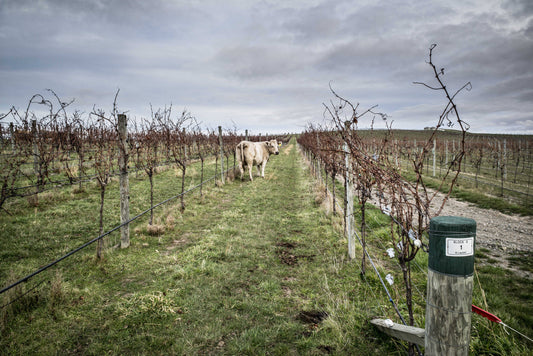| Friuli-Venezia Giulia in the north-east of Italy is known for its white wines – yet one of its important sub-appellations, Collio Goriziano, remains relatively undiscovered by British wine lovers. This crescent-shaped corner of Italy on the Slovenian border has been producing wine for centuries, and it’s now renowned for its fresh and acidic whites.
Due to its location between the Julian Alps mountain range and the Adriatic Sea, the climate is mild. Warm air and sea breezes from the south keep grapes dry, while the mountains protect vineyards from the colder winds. Cool air at night helps maintain acidity levels in the grapes, crucial for fresh tasting wines. A unique soil called ponca, a mixture of ancient layered marl and sandstone filled with sea fossils, nourishes the vines and gives the wines their characteristic freshness, saltiness, flinty tang and minerality.
Winemaking goes back to pre-Roman days, before the area became a key trading post during the Roman Empire. The wines continued to be highly sought after throughout the Middle Ages, during Austro-Hungarian rule and finally under Italian control.
Until the middle 1800s, Collio had more than 400 grape varieties. Most of the wines made were blends, with Ribolla, Schioppettino and Malvasia widespread. Afterwards, other grapes, including Pinot Grigio, Sauvignon Blanc, Tocai (Friulano), Merlot, Cabernet Sauvignon, Picolit became very well known.
Later, in the 20th century, new vineyards were planted as a result of the two World Wars. Collio had been a front line in World War I and battles were fought in the vineyards. So, the viticulture evolution was incentivized by reconstruction. Wine consultant and author Matteo Bellotto notes: ‘People planted the vineyards in order to reconstruct their own identities. Wine was the only natural and safe thing to drink and it was the power drink for working in the fields. Replanting vineyards came from the natural resilience of the people. Grapes grown included Ribolla, Tocai Friulano, Merlot and many others’.
DOC Collio was created in 1968 and today comprises around 1,500 hectares of vines. The wines account for only 11–12% of production of the whole of Friuli–Venezia-Giulia, so currently just a small amount is exported to the UK and around the world.
The region is renowned for its white wines (about 86% of grapes are white). As well as more recognizable international grape varieties, including Chardonnay, the region specializes in four indigenous ones. Friulano has a refreshing bitter almond character, delicate fruit and herbaceous touches with low acidity and a saline quality. Ribolla Gialla has good acidity, gentle floral aromatics and often shows fleshy fruit notes with a citric edge, while more complex examples are aged on their skins. Malvasia Istriana is typically aromatic and fruity, often with orchard fruit and white flower notes, while Picolit is used for late-harvest and passito dessert wines.
Pinot Grigio here is made in quite a full and elegant style, particularly the skin-contact versions.
Collio Bianco is the region's signature expression. It's a complex, elegant and fruity white blend, made from the best grapes. Based primarily on indigenous varieties, this is a style that producers say ‘speaks of the land it's from’ Each winery makes a unique version, an interpretation of the terroir, local traditions and experimentation. It's also an amazing match for pizza.
The towns of Gorizia in Collio and Nova Gorica in Slovenia, linked by a new bicycle and pedestrian path, will be joint European Capitals of Culture in 2025. This will be a great opportunity to experience the melting pot of cultures that characterizes this part of Italy which is only one-and-a-half hours' drive from Venice airport and even closer to Trieste.
Four great Collio wines
Chardonnay, Sauvignon Blanc, Pinot Grigio and Friulano combine to deliver scents of lemon balm, citrus zest and golden plum. The palate is dry, fruity, crisp and smooth, brimming with notes of fleshy stone fruit and pear, peach skin, custard apple and a touch of spice.
Delicious with a variety of light starters, fish and white meat dishes, such as chicken breast in a creamy mushroom sauce.
Fresh, aromatic, full and structured with notes of lemon zest, white blossom, apple, pear, brioche and grated almonds and a touch of toasty oak.
This blend of Friulano, Malvasia Istriana and Chardonnay has the complexity to pair with a variety of foods containing rich flavours and textures, including pizzas made with creamy burrata, fried aubergine and aged Grana Padano!
This has a long, mineral, rich and complex palate with notes of stone fruit, apricot kernel, soft chestnut purée and a touch of tannin.
Great for vegetarian dishes, including tempeh served with caramelized onions and mushrooms, but also with grilled salmon, cured meats and mature cheeses.
Aromatic and floral, the palate is fresh and fruity with notes of peach and pear, a salty and savoury edge, a touch of spice and a characteristic almond finish.
Perfect with cold meats, seafood starters, chicken and mushroom risotto. |



